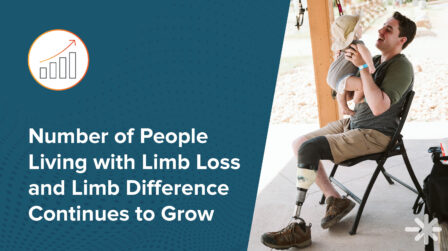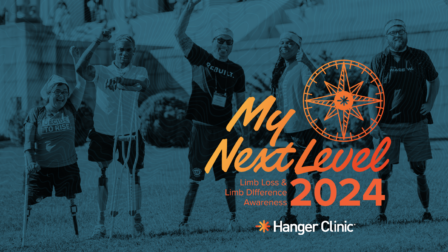The IMPACT Study: Your Top 8 Questions, Answered

The American Journal of Physical Medicine and Rehabilitation recently published a study suggesting that early delivery of a prosthesis following amputation is associated with up to a 25 percent reduction in overall direct healthcare costs.
In a recent webinar, a panel of experts reviewed the study’s findings while assessing their impact on our patients’ day-to-day lives, and several questions arose as part of that discussion. Study co-author Shane Wurdeman, PhD, CP, FAAOP (D) answers those questions and provides further insight into the importance of these findings to the O&P profession as a whole.
Shane Wurdeman, PhD, CP, FAAOP (D)
Director, Clinical Research, Hanger Clinic
Dr. Wurdeman has published numerous studies in peer-reviewed journals. In addition to his research work, he continues to manage a patient case load with Hanger Clinic.

Ask the Expert: The IMPACT Study
Q: What was the impetus for this study?
A: Historically, we assumed that patients benefiting from prosthetic mobility were not having the same type of health complications as those who were not able to get up and get moving. The genesis of this study was to verify this assumption by determining whether or not earlier delivery of a prosthesis translated into savings in terms of overall direct healthcare costs.
Q: What is the database you used in this analysis?
A: We utilized the IBM Watson Truven Healthcare Marketscan Database, in particular the “Commercial” dataset, extracting direct healthcare costs from the outpatient and inpatient services claims tables within the timespan of 2014-2016.
Q: What are the cost savings found in the study comprised of?
A: This is a very complex question as there are many variables to consider from person to person, which makes it difficult to generalize where these cost savings lie.
Q: Is the data affected by the type of amputation (e.g., upper extremity vs. transfemoral)?
A: The current analysis was limited to lower extremity amputation. Extrapolation into upper extremity may be problematic as the incidence of comorbid health conditions is less, and many of the comorbid health conditions associated with lower extremity amputation benefit from mobility/walking.
Q: Are there any plans to expand to upper limb analysis?
A: We are hoping to analyze multiple areas of care to understand how the services and care that Hanger Clinic provides can alter the trajectory of direct healthcare costs associated with the different patient populations we serve. The challenge is that this data is complex by nature and typically only available for short periods.
Q: Does the patient population studied include Medicare patients? If not, are there any plans on expanding the study to include this population?
A: The IMPACT 1 study is limited only to commercial payers, aged <65. We are exploring ways to similarly analyze and assess benefits within the Medicare population.
Q: What were the comparable ratios between vascular and non-vascular patients when looking at ambulation level at 12 months post-amputation?
A: The current analysis is limited to claims data. A limitation of claims data is the inability to assess clinical outcomes. Mobility and ambulatory level are among those variables that are not in the dataset. In other words, it’s not possible to directly assess if a patient receiving their prosthesis at 12 months is ambulating with similar levels of success as someone that received their prosthesis three months after amputation. Hanger is exploring strategic partnerships that may offer insight into these sorts of questions in the future.
Q: What is the impact on the patient?
A: It’s always important to understand that aggregate analyses such as this help to understand overall population health. It does not alleviate the need or pressures of individualized care, but serves only to understand general guidance. At the individual level of care, we can use findings to help optimize our patients’ clinical outcomes and improve their clinical experience, all while remaining cognizant of cost.
One way of approaching this is on a multidisciplinary level, as discussed by our panel moderator, Michelle Denning, PT, MHSA. This collaborative approach is being used at Hanger Clinic within many of our hospital partnerships, and brings together the physician, patient, prosthetist, and therapist to develop a cohesive plan to ensure each patient has the appropriate prescriptions in hand, required documentation, and confirmed appointments for any follow up services. The simple goal is to make it easy, accessible, and efficient for these patients to engage in their recovery.
Miss the Webinar? Watch the Recording and Earn CEUs.
On-Demand Credit Available
Watch the recording, then submit your credit request.
Latest Updates
Subscribe to stay up-to-date on our latest posts.



